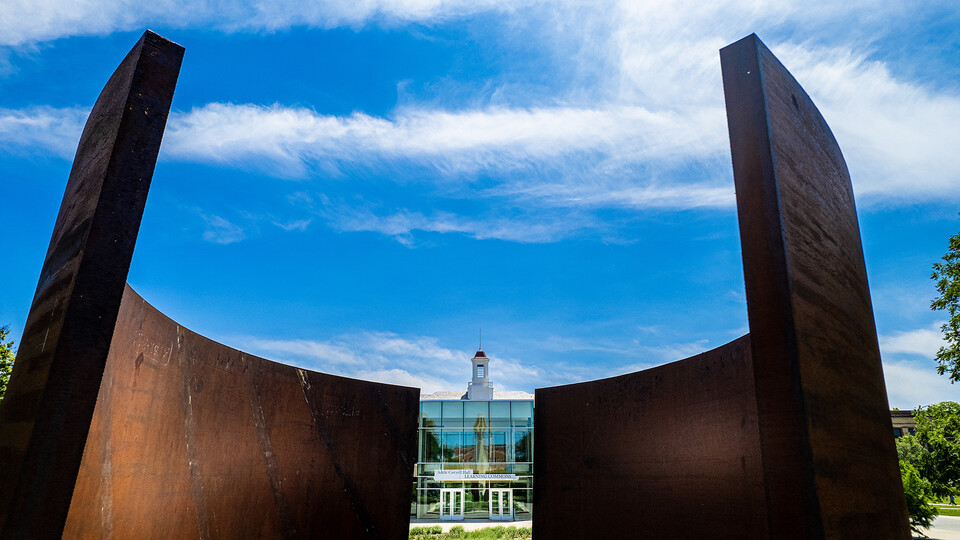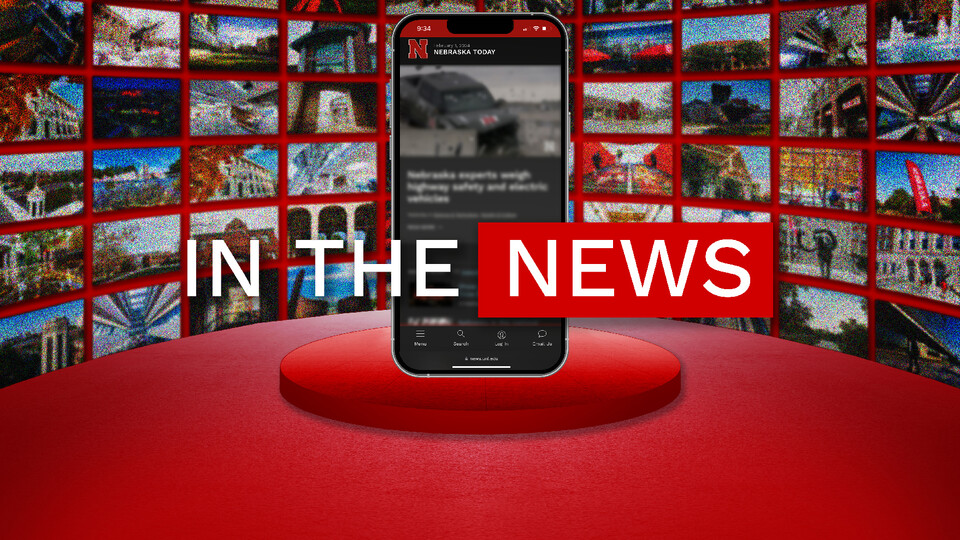
From Antarctica to Zika -- with Donald Trump, drones and dark fishing spiders in between -- our university attracted national media attention in 2016 for cutting-edge research, for higher-education leadership and for informed and reliable commentary on the most important events and issues of the year.
More than 500 national news stories mentioned the university, its people and its programs during 2016. University Communication regularly works with national media to connect reporters with faculty, staff, students and stories; appearances in the national media are logged at Nebraska in the News.
* * *
The Washington Post and other outlets reported in February on Antarctic research involving David Harwood and Christopher Fielding, Earth and atmospheric sciences. They helped coordinate research that extracted and examined a 3,375-foot-long rock sample drilled from beneath Antarctica’s McMurdo Sound. The drill core gave scientists a glimpse into Antarctica’s climate between 20 million and 14 million years ago and added new perspective on how increasing atmospheric carbon dioxide levels might affect Antarctica and Earth in the future. The Post also interviewed Harwood in September for a widely carried story about diatom fossils found atop Antarctic mountain ranges.
* * *
After the World Health Organization declared Zika-linked birth defects as a public health emergency, The Guardian quoted biologist Daniel Brooks on how climate change could be contributing to the spread of the mosquito-borne virus. Brooks is an adjunct research professor affiliated with the H.W. Manter Laboratory of Parasitology. Jiri Adamec, biochemistry, was featured in April’s High Plains Journal for his work with Brazilian authorities to speed up Zika testing in Amazonian areas by using the Novoplex card, a screening device he developed.
* * *
Carrick Detweiler, Sebastian Elbaum and Brittany Duncan, computer science and engineering, received extensive national coverage after a public test of their innovative fire-starting drone at Homestead National Monument near Beatrice, Nebraska, in April. The drone provides a safer way to start conservation fires to eliminate growth that endangers native species and increases the risk of wild fires. Wildfire Today announced the upcoming test in March. An Associated Press report on the April 21 test was carried by major outlets across the country; Popular Mechanics and Engadget also carried reports. As the group’s research continued, more stories appeared in July, August, and September.
* * *
Eileen Hebets, biological sciences, and her fellow spider scholars made frequent appearances in the national media with new discoveries and observations about spiders. Hebets and Alissa Anderson were cited in numerous stories in February and March for their study how male nursery-web spiders use spider-silk bondage to save themselves from death and cannibalism after mating. In May, the topic of research by Hebets and Jay Stafstrom was an unusual spider with gigantic eyes, used to capture bigger prey at night. That story, which originated with LiveScience, appeared in a number of outlets such as Mashable and CBS News. The Daily Mail in the UK likened the spider’s eyes to night vision goggles. The next big spider story came in October, when Hebets and former Nebraska spider researcher Steven Schwartz published findings that the female dark fishing spider’s habit of cannibalizing her mate leads to more and stronger offspring. The Economist sadly described the dark fishing spider’s habits as the “cruellest one-night stand of all.”
* * *
“The Bestseller Code,” a new book by Matthew Jockers, English, and his co-author and former student Jodie Archer received widespread coverage in August through November. Jockers and Archer used a supercomputer to analyze thousands of novels and detect patterns among which ones became bestsellers. The Wall Street Journal was among outlets that reported on their findings.
* * *
Jennine Capó Crucet, English, described what it's like to be a first-generation college student in a video essay that aired on PBS NewsHour.
* * *
As Donald Trump made his way to the White House, reporters from the region and the nation turned to political scientists John Hibbing, Kevin Smith and Ingrid Haas and others to explain how emotions and biology might be affecting voter behavior. In a May 2 column for the Washington Post’s Monkey Cage political science blog, Hibbing and Elizabeth Theiss-Morse, political science, offered a reason for Trump’s popularity by discussing their research that found many Americans dislike the debate and compromise that makes democracy “messy.” In June, the Atlantic cited the same research in a lengthy article describing how American democracy went "insane." In December, Hibbing penned an article at the Monkey Cage about how threat sensitivity illuminated Trump's rise. Vox.com talked to Haas, a political psychologist, in the wake of the nightclub shooting in Orlando that left 50 dead. She said that when people feel uncertain and fearful, they become more politically intolerant. That article also referred to Hibbing and Smith’s groundbreaking research on the biological underpinnings of politics.
In November, reporters from New York NPR affiliate NYC sought the help of Smith and his colleague Jeffrey French from the University of Nebraska Omaha as they reported on how stress affected American voters. The WNYCreport aired on a several NPR programs and podcasts.
* * *
Science interviewed Kenneth Bloom, physics, for an August report that additional experiments at the Large Hadron Collider at CERN in Switzerland had ruled out what had been thought to have been the discovery of a new particle in early 2016. It would have been the first wholly unexpected particle in decades.
* * *
The National Archives turned to Whitman scholar Kenneth Price, English, after a volunteer found a letter possibly written by poet Walt Whitman in a Civil War widow’s pension file. Price confirmed the letter was written by Whitman. It is the third example of a “soldier letter” that Whitman wrote on behalf of injured and dying soldiers as part of his hospital volunteer work during the Civil War. The Washington Post, National Public Radio and Smithsonian Magazine were among the outlets reporting on the find.
* * *
Wheeler Winston Dixon, film studies, served as a reliable source for many reporters across the nation covering film and popular culture. His name appeared almost every month on topics as wide-ranging as a top-selling Mozart CD collection, Christian Science Monitor in December; to the current popularity of “true crime” stories, Entertainment Weekly in January. He also commented on corporate Hollywood, movies based on video games and the absence of nonwhite nominees in the 2016 Oscar slate.
* * *
Faculty, administration, student and staff appearances in the national media are logged here. To review month-by-month stories highlighting the university's national news mentions click here. If you have additions to this list or suggestions for national news stories, contact Leslie Reed, the university's national news editor, at lreed5@unl.edu or 402-472-2059.


